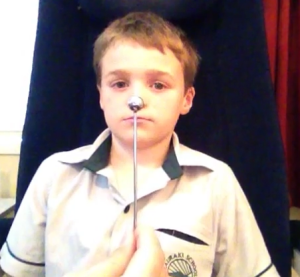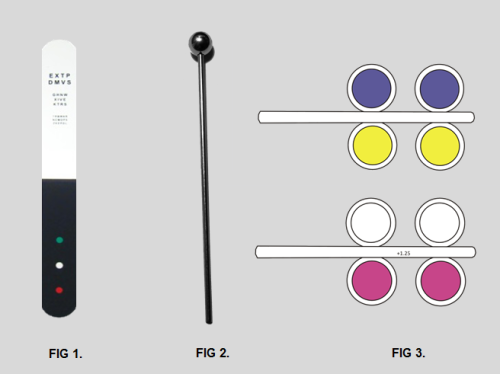It is estimated that over 80% of learning in the classroom comes from vision. Of particular importance are activities that involve close work such as reading and writing as these are dependent on having stable near vision. If a student is struggling to progress at school a problem with their near vision could limit the remedial effort including therapies for eye tracking and visual perceptual skills. The 3 Point Check Test is a simple & easy screening test for schools to check that near vision is clear & single and that words are not moving on the page. If a problem is found these can be effectively treated by an optometrist resulting in better learning outcomes.
Why do we need the 3 Point Check Test?
The American Optometry Association estimates that 1 in 4 students have an undiagnosed visual problem however studies indicate this may be much higher, at around 70% or more, for students that have a history of learning difficulties.1-3
Although it is recommended that ALL students with a learning problem have an eye examination not all clinicians check for the critical skills required for learning and these are not usually included in a standard school screening test. Even when an eye exam is recommended, parents may not follow this up on the basis that they feel their child is seeing well. Consequently, many students persist with visual problems that continue to impede academic progress for months or years costing the school valuable time and resources…. not to mention added anxiety for the student.
What’s in the test?
The test consists of a near fixation target with letters (Fig.1) to assess near focusing skills, a fixation wand to assess the ability of the eyes to converge (Fig. 2) and some precision tinted lenses (blue, yellow and pink) mounted in flippers to assess text that is reported to be moving on the page (Fig.3). In addition, a pair of +1.25D clear lenses are included which can be used to confirm the benefit of near reading lenses.
The blue and yellow tinted lenses are based on filters used in controlled trials. A set of instructions on how to perform each procedure is also included along with a referral form to an optometrist. For older students ages 11 and over, then a survey of symptoms (CISS) is also recommended.
What if a Problem is Found?
If a problem is found then tick the appropriate box on the referral page included in the pack and refer to an optometrist (preferably one with an interest in children’s vision). All of these problems can be treated with glasses, eye exercises or tinted lenses.4-8 Tinted lenses should only be prescribed if focusing and convergence problems have first been ruled out.9 If focusing and convergence problems are found then simple eye exercises may be recommended.
View the evidence base for the treatment of problems found on the 3 Point Check Test.
References
1. Dusek W, Pierscionek BK, McClelland JF. A survey of visual function in an Austrian population of school-age children with reading and writing difficulties. BMC Ophthalmology 2010, 10(16).
2. Shin HS, Park SC, Park CM. Relationship between accommodative and vergence dysfunctions and academic achievement for primary school children. Ophthalmic & Physiological Optics 2009, 29(6):615-624.
3. Grisham D, Powers M, Riles P. Visual skills of poor readers in high school. Optometry 2007, 78(10):542-549.
4. Wahlberg M, Abdi S, Brautaset R. Treatment of accommodative insufficiency with plus lens reading addition: is +1.00D better than +2.00D? Strabismus 2010, 18(2):67-71.
5. Convergence Insufficiency Treatment Trial Study Group. Treatment of accommodative dysfunction in children: results from a random clinical trial. Optometry & Vision Science 2011, 88(11):1343-1352.
6. Convergence Insufficiency Treatment Trial Investigator Group. A randomized trial of treatments for symptomatic convergence insufficiency in children. Archives of Ophthalmology 2008, 126(10):1336-1349.
7. Kim KM, Chun BY. Effectiveness of home-based pencil push-ups (HBPP) for patients with symptomatic convergence insufficiency. Korean J Ophthalmol 2011 25(3):185-188.
8. Hall R, Ray N, Harries P, Stein J. A comparison of two coloured filter systems for treating visual reading difficulties. Disability and Rehabilitation 2013, 35(26):2221-2226.
9. Northway N. Why do words jump? An exploration of visually symptomatic readers. Br Ir Orthopt J 2012, 9:3-8.



